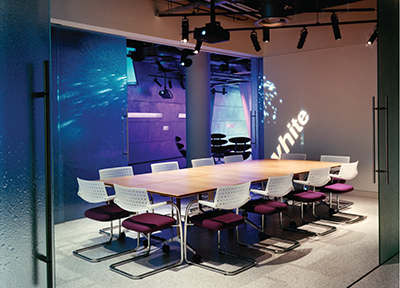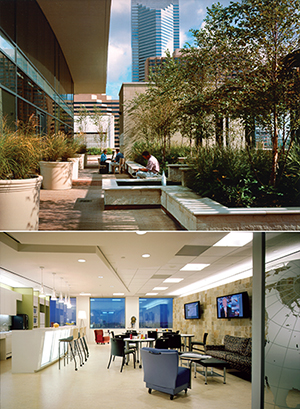by By Dean Strombom, AIA — Multiple generations are currently working side by side in today’s offices—generations raised under situations as different as the Cold War and the Gulf War, the TV era and the Wii era. Should you ever doubt the importance of these differences, take a look at the following facts about the generation of students now graduating from college. For them,
- The Soviet Union never existed.
- Germany has always been united.
- Smoking has never been permitted on U.S. airlines.
- A Bush or a Clinton has always been president.
- Use of the Internet has always been widespread.
- The NBC show Law & Order has always been on TV.
The world is a very different place for these workers than for their managers, who might well have watched Neil Armstrong take the first walk on the moon. Baby Boomers possess a completely different set of cultural touchstones and social experiences than today’s Millennials, (also known as Generation Y). These differences are impacting how organizations run meetings, set up benefit plans, and manage promotions.
They’re also impacting office space—how it is organized, furnished and designed. As new generations bring with them new ways of working, new demands are being placed on office space. Savvy companies will respond by adapting the workplace to their needs. This adaptation takes an understanding of generational differences and a willingness to accept each generation on its own terms. It also takes an effort to find common ground where they can work together. By focusing on the core business tasks of collaboration, learning and socialization, offices can create spaces where all generations can be productive.
Get to know your generations
More generations are working together than at almost any other time in U.S. history. Longer lifespans combined with a desire to keep working mean it’s possible for multiple generations to be sharing space in today’s workplace. The first step in successfully integrating these generations is understanding them.
The Silent Generation
Born prior to 1945, the earliest years of this generation were shaped by war and hardship. Major cultural events in their lives include the Korean War, the Cuban Missile Crisis and the assassination of President Kennedy. Major cultural figures were Buddy Holly and Elvis Presley.
The Silent Generation tends to be comfortable with authority. When in management positions themselves, they expect to be treated with respect. They are generally tolerant and willing to sacrifice. Silents expected to have only one job for their entire career and be taken care of when they retire. Today, Silents have reached retirement years but many continue to work either because they enjoy it or out of economic necessity. They are the least comfortable with contemporary technology.
Baby Boomers
Baby Boomers were born between 1946 and 1964 as part of a post-war generation explosion. Defining events were the Cold War, the Civil Rights Movement, Watergate and Vietnam. Major cultural events were the Beatles’ first performance on the Ed Sullivan Show and Woodstock.
Boomers tend to be optimistic and team-oriented. They’re very focused on work—which they want to be both personally and financially gratifying. More than the generations before and after, Baby Boomers tend to identify with their careers. They are currently starting to reach retirement age, although many will continue to work. Boomers also tend to value outward signs of professional success such as private offices and dedicated administrative help.
 |
| Photo: Tim Soar | Conference areas do best with movable tables and chairs. This configuration is formal yet flexible. |
Generation X
Born between 1965 and 1984, Gen Xers experienced significant political change marked by the end of the Cold War, economic hardships such as the savings and loan collapse and the rise of social crises such as homelessness and AIDS. Defining cultural events include the Challenger explosion, Tiananmen Square, and the Clarence Thomas hearings. Cultural icons included Madonna and Kurt Cobain.
Gen Xers are now in the position of moving into middle management at the same time as they raise their children. Unlike Baby Boomers, they tend to put more emphasis on work/life balance. Gen Xers expect to work for multiple employers during their lifetime and perhaps even change careers once or twice. They’re comfortable with technology and lean toward multi-tasking. Markers of status such as corner offices mean less to Xers, who have spent most of their careers in cubicles.
Generation Y (also known as Millennials or Nexters)
Millennials, born between 1985 and 2000, are the children of the Baby Boomers. Millennials grew up in a period of economic prosperity and political stability that was shattered by the events of Sept. 11 and the following wars in Afghanistan and Iraq. Major events include the Columbine shootings and the financial scandals of the early 2000s. Cultural touchstones include Facebook and MySpace, iPods and the hit TV show American Idol.
As a generation, they are optimistic with enormous confidence in their potential. Familiar with technology, Millennials expect access to the latest gear. They integrate technology seamlessly into their work—multitasking is all they’ve ever known. Like Gen Xers, they value work/life balance and expect to work for multiple employers throughout their careers. Millennials value equality and diversity. They want to work for organizations that demonstrate social values with a concern for the environment.
Generations in the office
The challenge of managing these multiple generations is impacting companies in a variety of ways—from how they set up their benefit plans to where the annual holiday dinner is held. Savvy companies also keep generational differences in mind as they consider how to best use their office space. Research by Gensler reveals that a great deal of how different generations react to the physical workplace is related to the progress of their careers.
For example, Millennials and the youngest of Gen Xers are still finding their way in the workplace. Research shows that these workers are focused on gaining familiarity with their careers, their colleagues and their company. They spend more time in waiting areas and common spaces, and the look and feel of these areas affects interactions. Since training is a big part of their job, the functionality of training rooms is another concern.
Those at the mid-points of their careers—generally Gen Xers and younger Baby Boomers—show a greater concern for the functionality of the workplace and their place within it. By now, they know their job and want individual workplaces in order to be as productive as possible. It also comes as no surprise that the independent-minded Gen Xers place emphasis on individual office spaces. This group prefers common areas and meeting rooms that convey a good impression and function well.
The oldest generations at work—Baby Boomers with a few Silents—place almost as much emphasis on common areas and meeting spaces as the youngest group. While mostly managers, these workers desire a sense of belonging within the community. As managers they want to cultivate collaboration—affirming their role in the workplace.
 |
| Photos: (top) Aker/Zvonkovic Photography | Don’t limit yourself to the walls of your office. An hour outdoors on a pretty day can rejuvenate staff members. Add WiFi, and they’re as productive as at their desks. | (bottom) Aker/Zvonkovic Photography | Social areas are no longer an afterthough but the heart of the office. Providing varied seating for either eating alone or discussing projects with colleagues, the atmosphere is energized with graphics and made comfortable with quality finishes. |
Finding common ground
Obviously, it doesn’t make sense for companies to design one office area for Millennials, one for Gen Xers and one for Baby Boomers. Functionality trumps generational differences. So how can organizations get the best out of each generation while designing an effective workplace?
The key is to find common ground where generations can work together. That means taking a solid look at how people truly work, not just how we assume they work. Research by Gensler has revealed that work falls into four general categories:
Collaboration
Work is done at individual desks, right? Wrong. Observational studies show that only 30 to 40 percent of work is done sitting at a desk. Dedicated spaces for collaboration need to take a priority in today’s office environments. These shouldn’t be formal board rooms. In fact, the more flexible and adaptable the space, the better. Effective collaboration spaces allow team members to rearrange furniture so they can break into smaller groups. They have ample white boards to write on and walls onto which information can be tacked. Technology access is critical. Make sure plenty of power outlets are available and provide wireless access to the company network.
Collaboration is the work of the future. Both Gen Xers and Millennials grew up working on team projects in school and expect to keep working in this manner. Further, for Millennials just entering the workplace and gaining familiarity with their organizations, collaborative work provides them with an opportunity to understand corporate culture and find their role within the team.
Focus
The most important task done sitting at individual desks is focused effort. Workers crave space for concentration—this includes limiting distractions from other employees. Cubicles have their advantages, but the typical cube does not screen out distractions completely. Today’s employers are looking to new solutions that provide a more serene setting for concentrated effort—keeping in mind that different types of jobs require different levels of concentration or team interaction. A member of an active sales team would benefit from always remaining in eyesight of other team members, while a graphic designer crafting layouts or an engineer running numbers could use more private space. It’s time to separate status from such considerations and provide individual workspaces suited to position instead of rank.
This can be challenge in the office for Baby Boomers and silents, who were raised to believe a corner office was a sign that you had grown in your career. However, these older workers can be satisfied by meeting other needs, such as making individual office space highly functional. Less familiar with technology than their younger peers, Boomers and Silents need the integration of technology and office space to be intuitive and seamless.
 |
| Photo: Gensler | Staff can use informal collaboration areas located adjacent to individual desks for team work. |
Learning
The constant changes in the economy mean that employee training is no longer an occasional need but rather a constant demand. Employees require training on new trends, technologies, situations and solutions to perform at their best. Research shows that this training is best conducted in dedicated spaces for learning. While these areas should be structured with clear lines of sight to the instructor and technology such as projectors and individual computers, they also need to be flexible to allow for classes to break into smaller groups.
It is shown that Millennials will use learning spaces the most but of course, every generation needs training. Even Baby Boomers and Silents are also getting consistently trained—these groups respond best to a formal classroom setting. By combining structure and flexibility into the space, you meet the needs of all groups.
Socialization
For many years, the socialization part of work was downgraded. Sure, you provided a break room, but it was an anonymous space with a folding table and chairs tucked next to the elevator banks. Today, savvy organizations recognize the value of socialization—realizing that the creative energy of an organization arises from informal interactions, serendipitous connections, and off-the-clock communications. The trend today is toward energizing social spaces with color and graphics to make them feel like a continuation of the workplace. Varied and comfortable seating encourages people to gather and talk. Socialization spaces don’t have to be designated break rooms—a corner by a stairwell can be provided with a comfortable table and chairs. Other companies offer socialization spaces as amenities by providing game rooms, gyms and meditation spaces.
Millennials respond immediately to socialization spaces—since they are seeking out colleagues at the early stage of their careers. They also respond to the fun aspect of these spaces. Think about how much press attention has gone to the amenities of companies like Google with their gourmet cafeterias, on-site pet centers and massage therapy rooms. Baby Boomers might dismiss such offerings as useless frills, but Millennials take them very seriously.
Bridging the gap
Whether they were raised with an old-fashioned phone with a dial, a touchtone phone with buttons or a cell phone the size of a credit card, employees need spaces for collaboration, focus, learning and socialization. By concentrating on these tasks, organizations can address the concerns of different generations and create spaces that fulfill the needs of individuals at different stages of their career. With smart planning, you can bridge the generation gap—one office space at a time. FMJ
About the author

Dean Strombom, AIA, has been a principal in Gensler’s Houston office for more than 27 years. Prior to taking up architecture, Strombom studied and worked in the fields of psychology and sociology—an experience that gives him a unique perspective in evaluating client needs and leading high-performance, collaborative design teams. Strombom has designed effective work environments for many market sectors including energy, legal, professional services, technology and financial. An active member of CoreNet Global, NAIOP, ULI and the AIA, Strombom has been a featured speaker at numerous design and facility management forums, promoting innovation and purpose-driven design.